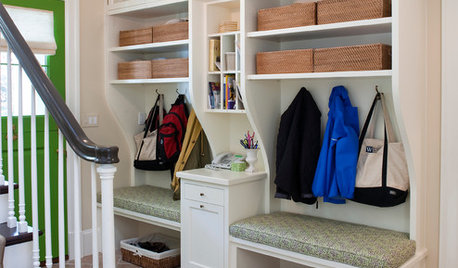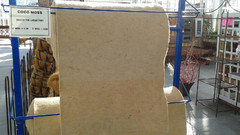Help with this philo
Lauren (Zone 9a)
7 years ago
Featured Answer
Sort by:Oldest
Comments (59)
Lauren (Zone 9a)
7 years agoRuss1023 (central Fla)
7 years agoRelated Discussions
Diagnosis needed for spotting on large philo
Comments (3)Austi, I do believe this plant has spider mites, even if you see no evidence of them. The progressively worsening pinprick marks are a dead give away! There are several different kinds of spidermites---not all of them spin webs and hide under the leaves. Philos tend to get the fast moving kind of spider mites that do NOT spin webs, and they hid deep in the crevices at the base of the plant. You'll likely never see them---you'll only see the damage. Many here on garden web will tell you you can cure a plant of spider mites, but I find they spread to other plants so fast it's not worth it. My advice is to toss the plant---sorry. :( PS Just an FYI: you might get more responses if you post in the "discussion" part of the forum, and you *can* post pics there! Most people use the gallery part of this forum to show off pretty plants that they don't have questions about. :)...See MoreRed Congo, or Imperial Philo. dropping leaves
Comments (4)Richard, Red Congo needs bright light. Not necessarily direct sun. Espeically during summer months. My Congo lived in a south window, year round, for years, but between a neighboring house and fir tree, strong rays obstructed. Still its color remained red. Humidity is mandatory for Philos, so if your home is dry. add a humidifer, and spray/hose leaves. Repotting shouldn't have been done, since it lost leaves, (Sick/weak plants shouldn't be repotted) and possibly dormant, a debatable topic, (some plants do, others don't) Philos are evergreen, leaves should remain in tact throughout the year. Since your soil stayed moist two weeks or longer, it was 1. Too heavy, or 2. Over-potted. What size/material pots, before and after repotting? Is it doing better, worse, the same? You mentioned it being a 'little rootbound.' What is a little? How much space between rootball and inner, old pot? Toni PS. Do not fertilize unless plant resumes health, and new growth forms....See MoreMoonlight Philo help?
Comments (8)Hi! I have one of these plants, bought in early spring. I was lucky enough to get it while it was being unloaded off the truck. I damaged it a bit when i used a soapy water mixture during a mite outbreak. The moonlight didnt have mites, but some nearby plant did and i wanted to be sure. Problem was, it was too much soap and i destroyed some leaves. I decided not to cut them just yet, but wait until new leaves grew in before i get to cutting. Plants get thier energy from the work leaves do and if i cut off too many it many limit the plant. Just my personal philosophy-not sure how scientifically accurate it is. Anywho, ive gotten at least 4 new leaves these past few months, and another on the way. In the late fall I may trim the more damaged leaves. I really love the bright green of the new leaves. Isnt that awesome? would love to paint my room that color......See MoreHelp! How to cut back Philo Selloum?
Comments (8)All of you on this forum have been so helpful to me with this issue. I'm going to show you the rest of the courtyard so you understand what I'm up against besides the issue of the philodendron. I planted all the wrong things in the courtyard when I moved in (except for the White Birds of Paradise that now are plagued by White Fly, & the Confederate Jasmine that supplies the most heavenly aroma half the year), and now I'm simply beating back all these mistakes. Because everything has such deep taps roots, nothing can be transplanted or dug out short of using dynamite in this small space. I cut back the fishtails with a chain saw. Nothing here receives any fertilizer. Just regular irrigation from the sprinkler system. The plants & courtyard hold so much moisture, that I have to pressure wash 2-3 times per year to deal with the mold and mildew. This is my third fountain since 2006 and my second set of patio furniture because the sun, water and rust take a toll on anything outdoors. The last picture is of the philo selloum in my neighbor's courtyard. It's almost 10' feet across and I know that if I don't cut mine back, I'll have what they have next door in a few years....See Morepetrushka (7b)
7 years agopetrushka (7b)
7 years agoLauren (Zone 9a)
7 years agoRuss1023 (central Fla)
7 years agoLauren (Zone 9a)
7 years agoRuss1023 (central Fla)
7 years agoRuss1023 (central Fla)
7 years agoLauren (Zone 9a)
7 years agoLauren (Zone 9a)
7 years agoRuss1023 (central Fla)
7 years agopetrushka (7b)
7 years agopetrushka (7b)
7 years agolast modified: 7 years agoLauren (Zone 9a)
7 years agopetrushka (7b)
7 years agoLauren (Zone 9a)
7 years agoRuss1023 (central Fla)
7 years agoLauren (Zone 9a)
7 years agoRuss1023 (central Fla)
7 years agoRuss1023 (central Fla)
7 years agoLauren (Zone 9a)
7 years agoRuss1023 (central Fla)
7 years agoLauren (Zone 9a)
7 years agoRuss1023 (central Fla)
7 years agoLauren (Zone 9a)
7 years agoRuss1023 (central Fla)
7 years agopetrushka (7b)
7 years agoRuss1023 (central Fla)
7 years agopetrushka (7b)
7 years agoRuss1023 (central Fla)
7 years agogardenfanatic2003
7 years agopetrushka (7b)
7 years agoLauren (Zone 9a)
7 years agolast modified: 7 years agoRuss1023 (central Fla)
7 years agoRuss1023 (central Fla)
7 years agoLauren (Zone 9a)
7 years agopetrushka (7b)
7 years agoLauren (Zone 9a)
7 years agogardenfanatic2003
7 years agogardenfanatic2003
7 years agoRuss1023 (central Fla)
7 years agogardenfanatic2003
7 years agolast modified: 7 years agoRuss1023 (central Fla)
7 years agogardenfanatic2003
7 years agoRuss1023 (central Fla)
7 years agopetrushka (7b)
7 years agopetrushka (7b)
7 years ago
Related Stories

ORGANIZINGWant to Streamline Your Life? Get a System
Reduce stress and free up more time for the things that really matter by establishing specific procedures for everyday tasks
Full Story
LOFTSHouzz Tour: Lofty Ambitions Fuel a Manhattan Makeover
A bare-bones space becomes a personal, eclectic showcase at the hands of a designer who loves collecting
Full StorySponsored
More Discussions








Lauren (Zone 9a)Original Author